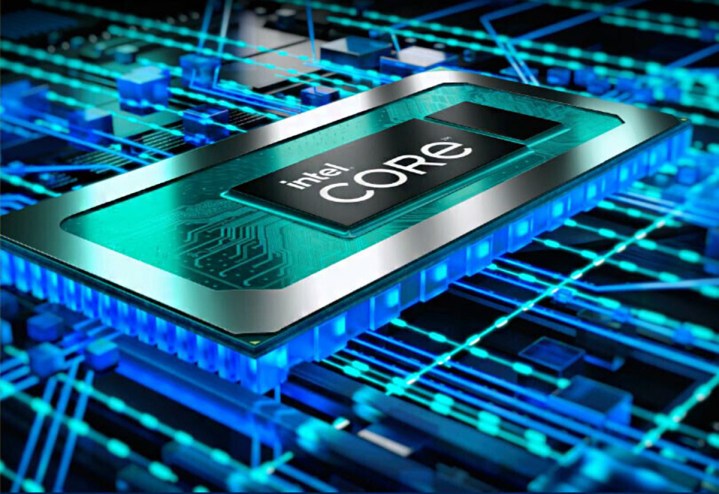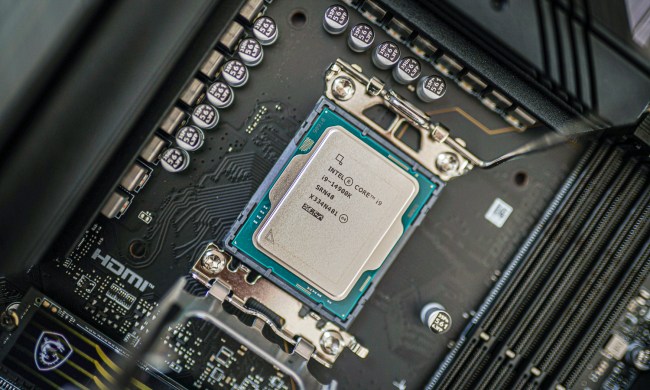According to a freshly leaked benchmark, Intel may be about to set new standards in high-end gaming laptop performance. The upcoming Intel Core i9-12900HX mobility chip has been benchmarked and returned fantastic results.
Although it looks like the Core i9-12900HX may swiftly become the best processor found in laptops, this kind of power doesn’t come without a potential downside — the laptop’s battery life.

The processor, spotted in the Geekbench database, will certainly mark a first for Intel once it’s released. It will be the first 16-core, 24-thread Intel laptop CPU on the market. Considering that this is an Alder Lake processor, it will feature the usual hybrid architecture, translating to eight performance cores and eight efficiency cores. The base clock was rated at 2.49GHz, with the boost clock going as high as 4.88GHz, which means that the CPU may be able to hit 5.0GHz.
The Intel Core i9-12900HX was found inside the upcoming Lenovo 82TD laptop and accompanied by an equally powerful graphics card, the Nvidia GeForce RTX 3080 Ti, in its laptop form, as well as 32GB RAM. The HX-series also comes with an integrated graphics card of its own, and this particular model has 32 Xe-LP GPU cores. Realistically, no one is ever going to use those, as a high-end processor is unlikely to find itself in a setup without a discrete GPU.
The upcoming Core i9-12900HX is an upgrade over its closest cousin, the Core i9-12900HK, which comes with 14 cores and 20 threads. This chip will likely end up at the top of Intel’s laptop lineup, and the benchmark results are here to confirm that. It scored 1,921 in single-core and 15,974 in multi-core tests. How does that match up against similar chips?
This CPU manages to beat every single processor in the multi-core benchmark, leaving AMD Ryzen 9 6900HX far behind with a score of just 10,151. It also outperforms the Core i9-12900H by a smaller margin, although it loses to the Core i9-12900H in single-core tasks by a very small margin. However, once more benchmarks are out, these results may still change.

According to Wccftech, this processor may actually be the full desktop chip that has undergone some optimizations to make it viable for laptops. Some of those adjustments would have certainly included power consumption and efficiency, but beyond that, the Core i9-12900HX is still a power-hungry chip with a TDP of 55 watts. Combine that with the RTX 3080 Ti, which can have a TGP of up to 175 watts in its best configurations, and we have a laptop that is unlikely to enjoy a long battery life.
No official information about the potential battery life of the Lenovo 82TD has emerged as of yet, but with such powerful components, frequent charging is most likely going to be necessary. This would make gaming on the go difficult — but poor battery life is often the price to pay for a high-end gaming laptop, so this won’t be a first.
Whenever the Lenovo 82TD is released with all of these outstanding components inside, it will undoubtedly be demanding in terms of the power bill and the initial expense. However, for a top-of-the-line laptop with Intel’s first 16-core mobile CPU inside, it just might be worth its presumably high price tag and the high power consumption that will follow.



